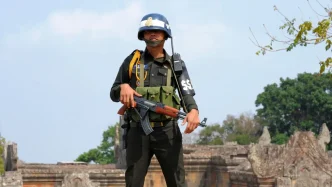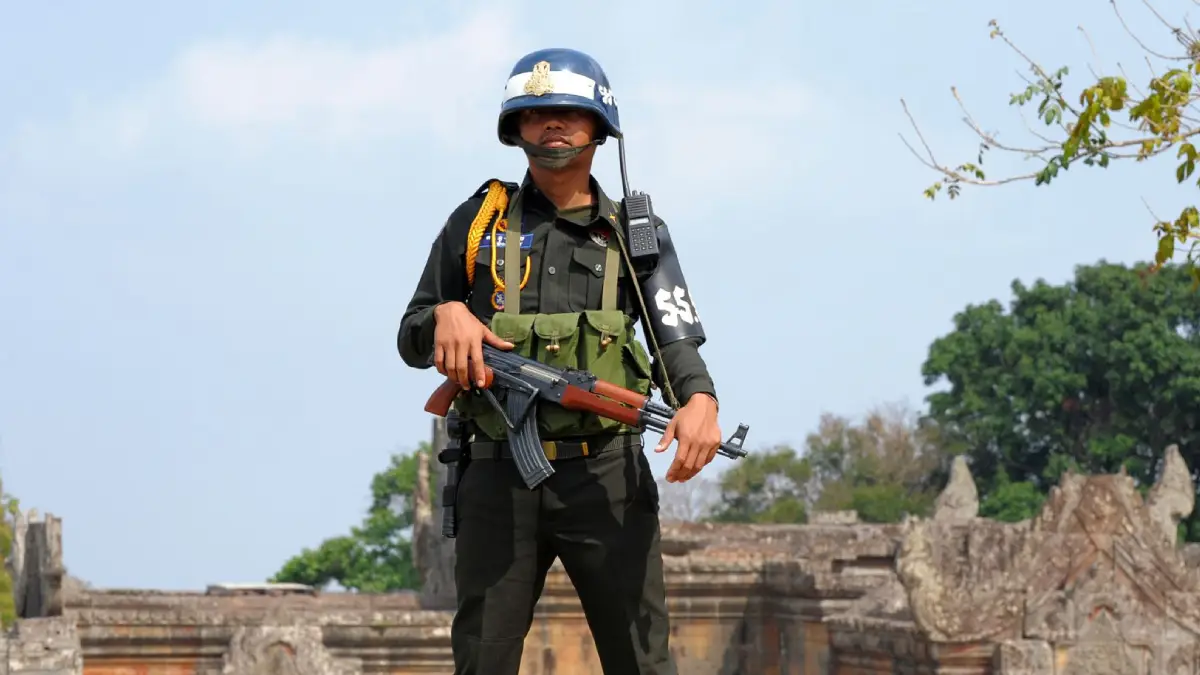In a resolute address on July 3, 2025, Cambodian Prime Minister Hun Manet underscored the ongoing territorial disputes over the Emerald Triangle and several historic temples, including Ta Moan Thom, Ta Moan Tauch, and Ta Krabei, along the Cambodia-Thailand border. With tensions simmering over access to these culturally significant sites, Hun Manet emphasized that no unilateral actions should be taken until a ruling is issued by the International Court of Justice (ICJ). His comments signal a firm stance on maintaining the status quo, amid strained relations with neighboring Thailand over border crossings and access rights.
Disputed Territories and the Call for Status Quo
Hun Manet’s remarks came in the context of a long-standing disagreement between Cambodia and Thailand over specific border areas, which have been points of contention for decades. The Emerald Triangle, a region where the borders of Cambodia, Thailand, and Laos converge, along with the ancient temples of Ta Moan Thom, Ta Moan Tauch, and Ta Krabei, remain under dispute. These sites hold immense cultural and historical value for both nations, often becoming flashpoints for nationalist sentiments.
“Let me make it clear, the areas of Ta Moan Thom Temple, Ta Moan Tauch Temple, Ta Krabei Temple, and the Emerald Triangle are unresolved,” Hun Manet stated during his address. “We have submitted the matter to international judicial mechanisms. No party has the right to unilaterally block access to these areas.” He further stressed that the situation must remain as it was on June 7, 2025, warning that any attempt to restrict Cambodian citizens from entering these areas would “cross a red line” and be met with “appropriate consequences.”
The Cambodian leader’s insistence on maintaining the status quo reflects a broader diplomatic strategy to avoid escalation while awaiting a definitive ruling from the ICJ. This approach seeks to balance national pride with the need for peaceful resolution, particularly in a region where border skirmishes have historically led to loss of life and heightened tensions. The reference to June 7, 2025, as a baseline suggests a specific agreement or understanding that Cambodia wishes to preserve until the legal process concludes.
Border Crossing Tensions and a Call for Dialogue
Beyond the territorial disputes, Hun Manet addressed immediate practical concerns regarding border crossings between Cambodia and Thailand. He urged Thai authorities to unilaterally reopen their side of the border to restore normalcy to the situation as it existed on June 7, 2025. In a gesture of reciprocity, he pledged that Cambodia would follow suit within five hours of Thailand’s action, signaling a willingness to de-escalate tensions through coordinated efforts.
The closure of border crossings in disputed areas has significant implications for local communities, many of whom rely on cross-border trade and movement for their livelihoods. For villagers living near the Emerald Triangle, restrictions on access can disrupt daily life, limiting access to markets, family connections, and even religious sites. Hun Manet’s call for reopening the border highlights the human cost of these disputes, beyond the geopolitical stakes.
However, the Cambodian government’s position also carries an implicit warning. By framing any unilateral restriction as crossing a “red line,” Hun Manet has made it clear that Cambodia is prepared to respond—though the nature of such “appropriate consequences” remains unspecified. This ambiguity could be interpreted as a diplomatic maneuver to maintain flexibility, or as a subtle signal of readiness for stronger measures if provoked.
Historical Context of Cambodia-Thailand Border Disputes
The border disputes between Cambodia and Thailand are deeply rooted in history, dating back to colonial-era demarcations and post-independence negotiations. The Emerald Triangle and the temples in question have been subjects of contention since at least the mid-20th century, with both nations claiming historical and cultural ownership. The 1962 ICJ ruling on the Preah Vihear Temple, another disputed site along the border, awarded sovereignty to Cambodia, but subsequent disagreements over surrounding areas and access rights have kept tensions alive.
Skirmishes over these territories have flared up intermittently, most notably in 2008-2011, when military clashes near Preah Vihear resulted in casualties on both sides. These incidents underscored the volatility of the border region and the potential for disputes to escalate rapidly. While the current situation has not reached such levels of violence, Hun Manet’s recent comments suggest that Cambodia remains vigilant and prepared to defend its interests.
The involvement of the ICJ in the current disputes over Ta Moan Thom, Ta Moan Tauch, Ta Krabei, and the Emerald Triangle reflects a mutual recognition that bilateral negotiations alone may not suffice. By deferring to an international judicial body, both nations appear to seek a legally binding resolution—though the process can be protracted, leaving room for interim friction. For Cambodia, the emphasis on maintaining the status quo serves as a safeguard against perceived encroachments during this waiting period.
Regional Implications and International Oversight
The border dispute between Cambodia and Thailand is not merely a bilateral issue; it carries implications for regional stability in Southeast Asia. The Association of Southeast Asian Nations (ASEAN), of which both countries are members, has long advocated for peaceful resolution of disputes among its members. However, ASEAN’s principle of non-interference often limits its ability to mediate directly, leaving international bodies like the ICJ to play a more decisive role.
For Cambodia, Hun Manet’s stance aligns with a broader narrative of asserting national sovereignty while navigating complex regional dynamics. His leadership, following in the footsteps of his father Hun Sen, who ruled Cambodia for nearly four decades, reflects a blend of continuity and adaptation. Since taking office in 2023, Hun Manet has sought to balance domestic priorities with foreign policy challenges, including border issues with Thailand and broader geopolitical tensions involving major powers like China and the United States.
Thailand, for its part, faces its own domestic political pressures, which may influence its response to Cambodia’s calls for border reopening. With a history of military involvement in border disputes, Thai authorities must weigh national security concerns against the economic and social benefits of normalized relations. The outcome of upcoming discussions, as referenced by Hun Manet, could set the tone for bilateral ties in the near term.
Public Sentiment and Cultural Significance
Beyond the political and diplomatic dimensions, the disputed temples and border areas hold profound cultural significance for Cambodians and Thais alike. These sites are not just territorial markers but symbols of national identity, tied to centuries of history and religious practice. For many Cambodians, access to temples like Ta Moan Thom is a matter of cultural heritage, not merely politics. Restrictions on movement to these areas can stoke public frustration, amplifying the stakes for leaders like Hun Manet.
Similarly, in Thailand, nationalist rhetoric often frames these territories as integral to Thai history, creating a domestic imperative for firmness in negotiations. This mutual cultural attachment complicates diplomatic efforts, as any perceived concession can be seen as a betrayal of national pride. Hun Manet’s insistence on maintaining access for Cambodian citizens reflects an awareness of these domestic sentiments, positioning him as a defender of national interests.
Looking Ahead: A Path to Resolution?
As Cambodia and Thailand await the ICJ’s ruling on the disputed territories, the immediate focus remains on preventing escalation and restoring normalcy at border crossings. Hun Manet’s call for dialogue and reciprocal action offers a potential pathway to de-escalation, though much depends on Thailand’s response. If discussions fail to yield progress, the risk of renewed tensions looms, with implications for both local communities and regional stability.
For now, Cambodia’s position is clear: the status quo must be respected, and unilateral actions will not be tolerated. Whether this stance leads to a diplomatic breakthrough or further strain remains to be seen. As the legal process unfolds, the eyes of Southeast Asia—and the international community—will be on this historic border, watching for signs of resolution or conflict in a region where history and politics are inextricably linked.















